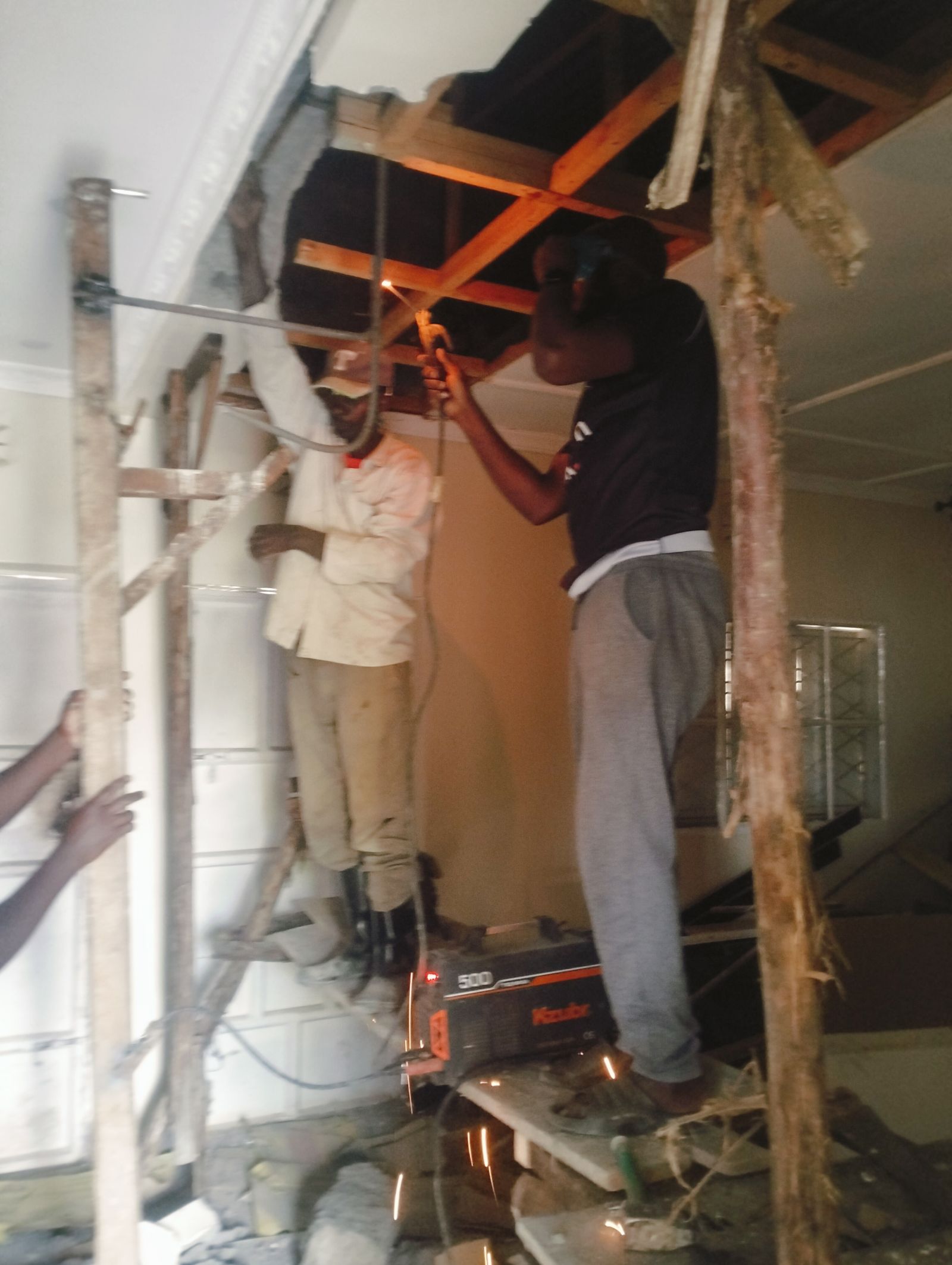
Time costs more than concrete
Abigael Rotich , Kenya Dec 17, 2025
The Global Fast Fit Movement and Wellness center is now in existance. An idea concieved in our minds, discussed in many meetings and finally renovated with our very hands.
When we began the renovation of the wellness center, there was a clear budget, a defined scope, and an optimism that comes with imagining something finished before it exists. We know that failing to plan is planning to fail. So we planned everything in advance; the walls that needed to be torn down, the tiling, the painting the washroom repairs, the plumbing and electrical work, the furnishing and branding. We were so confident, we even started planning for an opening date. The costs made sense on paper. Materials were priced, labour was estimated. Concrete, tiles, fixtures- everything had a number attatched to it.
Time did not.
As the build progressed, it became clear that time was not a neutral backdrop to the work. Each additional day on site quietly translated into more money spent. Labour extended. Supervision repeated. Materials sat longer than planned. Small delays made room for bigger ones. The budget didn’t break all at once—it thinned gradually, stretched by time itself.
Time, I learned, costs more than concrete.
What made this especially complex was that the rising costs were not driven by extravagance or neglect, far from it, this project was like a third baby for us. We are even considering doing a ngemi for the opening ceremony, just like we do after the birth of a child. But I digress. The rising costs were the result of subtle, reasonable choices made over a long period. Work continued, but momentum slowed. Progress became less linear. The longer the project took, the more it asked of everyone involved—financially, mentally, and emotionally.
One of the quieter forces shaping this timeline was perfectionism—not as a personal trait, but as a way of working that often enters construction spaces unnoticed.
Perfectionism usually arrives with good intentions. It values quality, precision, and durability. In a building meant to last, these qualities matter. But when perfectionism becomes the primary driver rather than a supporting principle, it changes the relationship with time.
Functionally complete work is revisited. Minor details are refined again and again. Decisions pause while better options are explored. Progress slows, not because the work is poor, but because finishing feels premature. Perfectionism doesn’t look like delay—it looks like care. It is care.
And yet, each refinement carries a cost.
Time stretches. Labour extends. Momentum softens. The project remains open long enough for new risks to emerge, new changes to feel necessary, and new expenses to appear. Instead of moving forward, the work begins to circle itself. The longer it lasts, the more opportunities there are to notice what could be better.
Perfectionism thrives in extended timelines.
What struck me most was how this played out in the context of a wellness center. We were creating a space intended for grounding, healing, and regulation—yet the process itself was often tense and consuming. Decision fatigue set in. The desire for completion began to outweigh the desire for precision. Peace slowly became more valuable than savings.
This experience reshaped my understanding of quality. Excellence does not always come from endless adjustment. Sometimes, it comes from knowing when something is good enough to move forward. Good enough is a triggering word to high achievers. They or rather we, want the best of the best. A space does not need to be flawless to be safe, functional or meaningful. But it does need to exist.
Time, once stretched, does not stay empty. It fills—with cost, with stress, with lost opportunity. And in the end, it becomes the most expensive material on site.
If this project taught me anything, it is this: protecting momentum is as important as protecting standards. Because while concrete sets and hardens, time keeps moving—and it charges for every extra day.
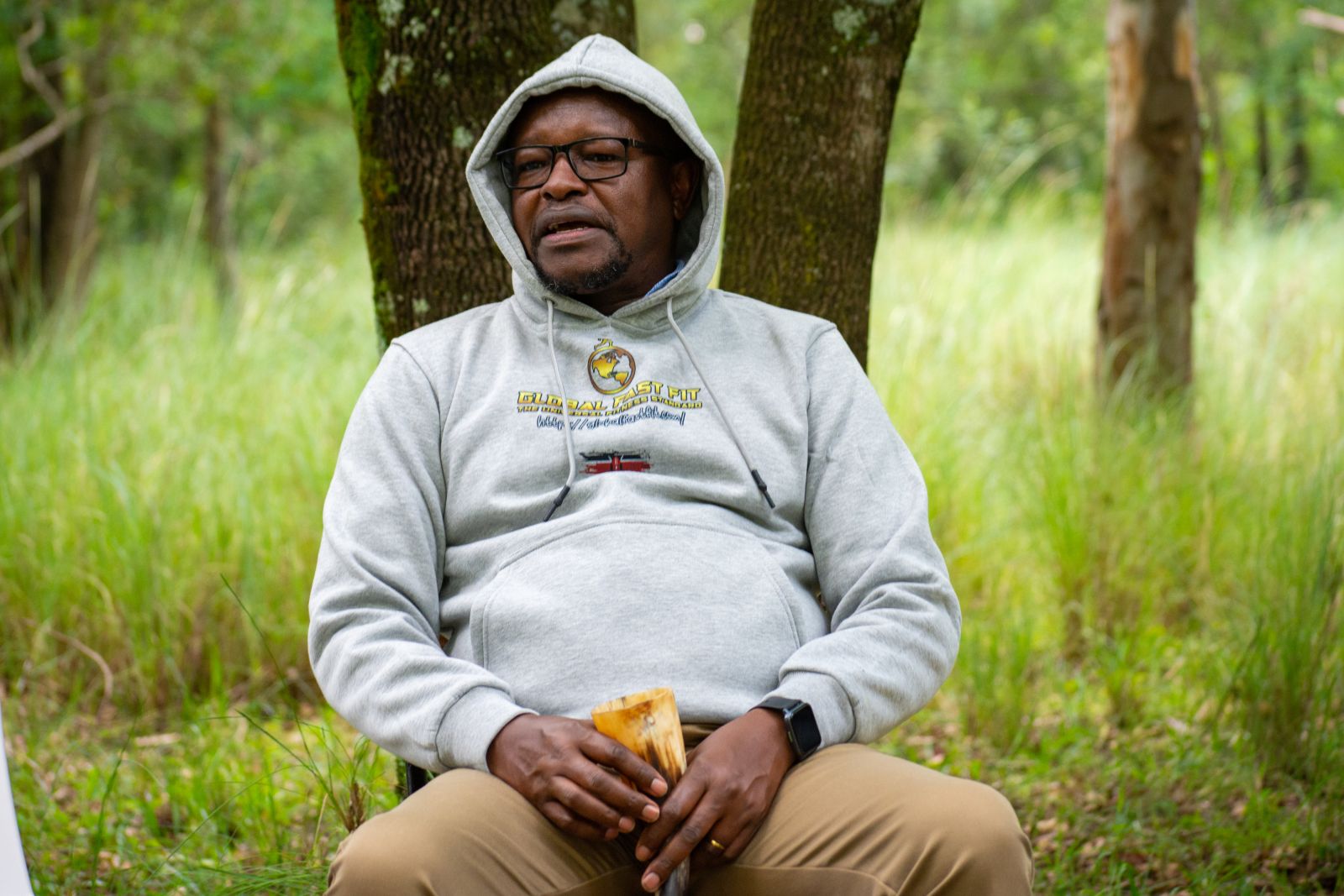
Muratina
Dr. James Muchiri , Kenya Dec 15, 2025
In the earlier piece on ngemi, I explored how ululations were used to announce a birth and to publicly declare the virtues a child was expected to grow into. Ngemi was immediate, audible, and communal. It travelled quickly, carrying news and expectation across space.
But among the Agīkūyū, celebration did not end with sound.
Once the ululations settled, the gathering shifted. The focus moved from announcement to responsibility. This transition is where muratina traditionally appeared.
If ngemi spoke to the wider community, muratina addressed those who would carry the responsibility forward.
Muratina in Context
Muratina (mũratina) is a traditional fermented drink named after the mũratina tree (Kigelia africana), whose fruit is used in the brewing process. While often described simply as alcohol, culturally muratina was not brewed or consumed casually.
According to traditional accounts, muratina was brewed for specific purposes: rites of passage, marriage-related ceremonies, reconciliation, councils of elders, and occasions involving blessing. A man did not brew muratina for private consumption. It was prepared with intent, for defined social moments.
Brewing itself was a communal activity. Younger family members assisted with harvesting and preparation, elderly women carried out the brewing, and elderly men presided over beer-related rituals. Brewing took place around the hearth in the woman’s hut, a space associated with solemn domestic and ritual functions.
Ingredients as Cultural Markers
Muratina was traditionally made using four core ingredients: water (maaĩ), sugarcane juice (ngogoyo), honey (ũũkĩ), and the mũratina fruit. Each ingredient had both a practical role and a culturally understood meaning.
Water (Maaĩ)
Water formed the base of the brew. Culturally, it was associated with purity, truth, righteousness, and self-control. Its adaptability — taking the shape of its container — was often used to illustrate how one should uphold truth while adjusting to circumstances.
Sugarcane Juice (Ngogoyo)
Sugarcane juice provided fermentable sugars. Its segmented structure informed its symbolism. The less sweet upper segments represented youth and inexperience, while the sweeter lower segments represented maturity and wisdom. Different sugarcane varieties were also used to illustrate learning from multiple sources.
Honey (Ũũkĩ)
Honey symbolized hard work, wealth, and collective identity. Bees were frequently referenced as models of social organization: working in colonies, defending only when necessary, returning to their hive, and extracting value even from difficult environments. Honey reinforced ideas of cooperation, discipline, and responsibility to one’s community.
Mũratina Fruit
The sausage fruit was not picked from the tree; it was used only after falling naturally. This was understood to represent maturity and natural readiness. The many seeds inside the fruit symbolized fertility, posterity, and continuity. Traditional belief also associated the fruit with strength and vitality into old age.
Preparation, Vessels, and Rules of Use
Muratina was brewed in large gourds known as ndua and served from medium-sized gourds called nyanja. Men and women used different drinking vessels, reflecting established social roles.
Consumption followed clear rules:
-
Muratina was shared, not portioned
-
The order of drinking mattered
-
Elders drank first because they were expected to speak, bless, or decide
Refusing to drink muratina was acceptable. Disrespecting the process was not.
During significant occasions, muratina was also used for blessing. A small amount might be poured onto the ground for ancestors, and a little applied to the hands or chest before words of blessing were spoken. Through this, muratina was understood to connect the unborn, the living, and the ancestors, with Ngai as witness.
Parting Shot.
Understanding muratina only as a traditional alcoholic drink misses its primary cultural role. It functioned as a structured social tool, governed by rules, symbolism, and purpose.
After the ululations had done their work, muratina ensured that celebration was followed by reflection, and that spoken blessings were anchored in collective responsibility.
In this way, muratina did not replace ngemi.
It completed it.
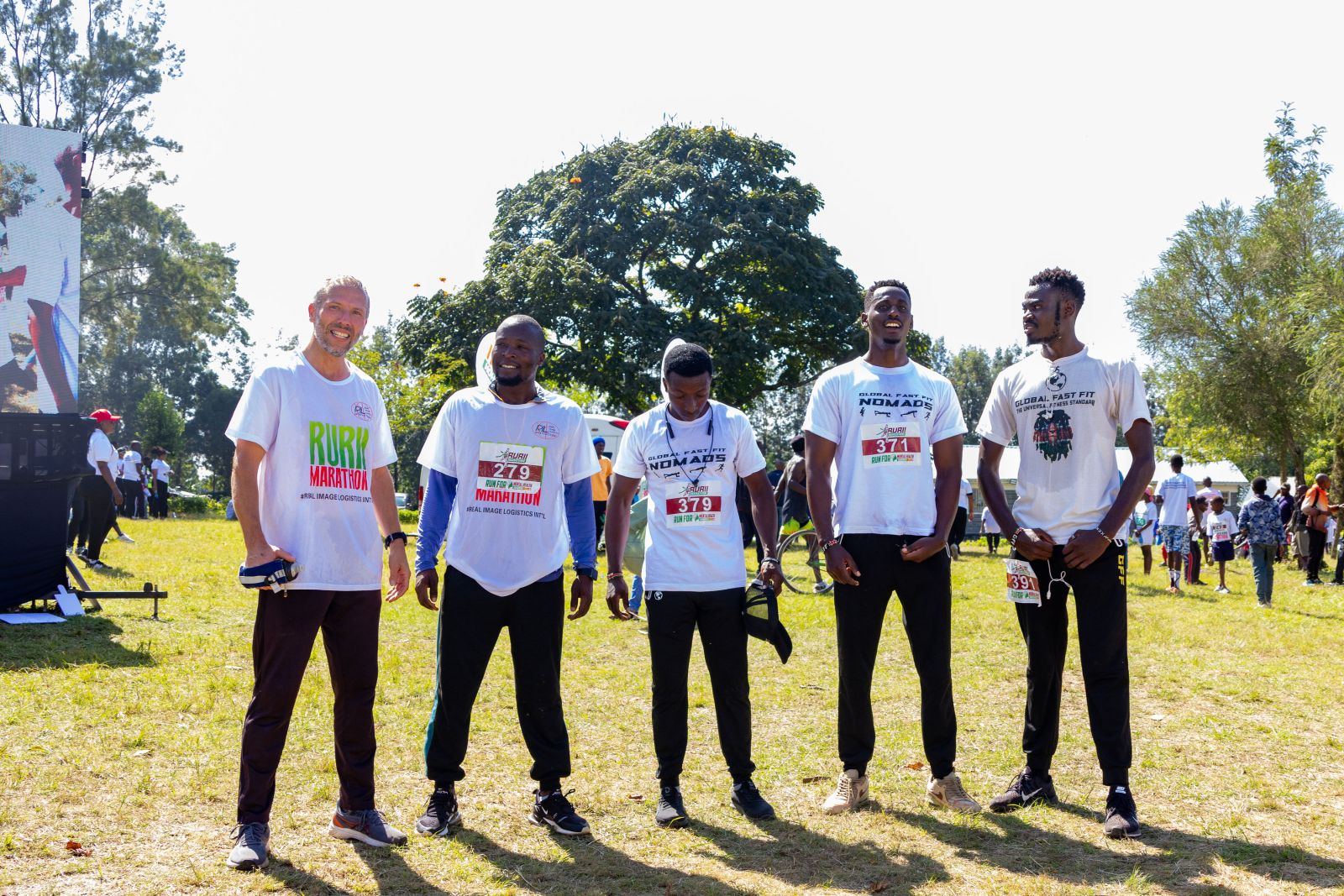
WHEN THE BODY SAYS STOP,THE MIND SAYS GO:MY 10KM RUN AT THE RURII MARATHON
John Nderitu , Kenya Dec 14, 2025
On 13 September 2025, I stood on the starting line of the Rurii Marathon knowing one thing — this run would test more than my legs. It would test my mind.
The race was organized to promote mental health awareness, and ironically, that message revealed itself most clearly during the toughest kilometers. I set out strong, focused, and determined. By the halfway mark, my breathing had changed, my legs felt heavy, and my body started sending clear signals: slow down, stop, rest.
But my mind refused to listen.
Every step after that felt like a negotiation between pain and purpose. My muscles burned, my lungs worked harder, and fatigue crept in. My body was begging me to stop — but my mind kept on moving. I reminded myself why I started, why I trained, and why finishing mattered more than comfort.
The road wasn’t just a physical path; it became a mental battlefield. I pushed through doubt, discomfort, and exhaustion, choosing discipline over excuses. The cheers from the community and the sight of fellow runners fighting their own battles fueled my resolve.
When I finally crossed the finish line, the clock read 1 hour for 10 kilometers. That moment wasn’t about the time — it was about victory over self-doubt. I proved to myself that limits are often mental before they are physical.
The Rurii Marathon wasn’t just a race. It was a lesson in resilience. A reminder that the mind must lead when the body grows tired. And a powerful symbol of why mental health awareness matters — because strength begins within.
I walked away exhausted but proud, knowing I didn’t just finish a run — I conquered a conversation between my body and my mind.
When the body begs you to stop, let your mind carry you forward.
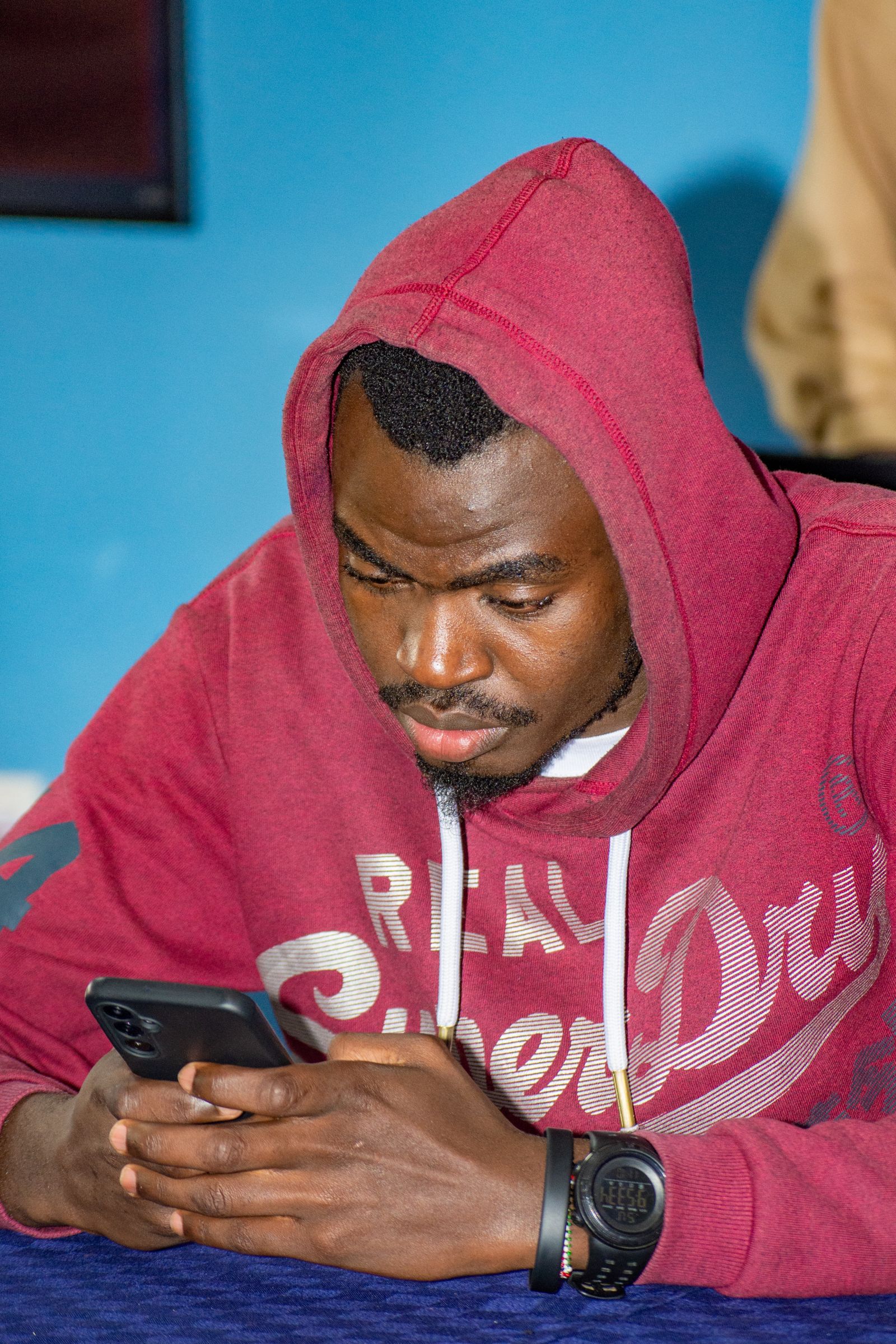
BASIC KNOWLEDGE AND INSIGHTS ON AI
Meshack Simiyu , Kenya Dec 08, 2025
The Unexpected Side of AI: What Most People Are Missing
Artificial Intelligence has become the loudest topic of our generation. Everyone talks about how it will take jobs, change industries, and reshape the future.
But beneath the noise, there are deeper, less obvious shifts happening—shifts that reveal how AI is actually transforming human potential, creativity, and even talent discovery.
Here are the unexpected insights about AI that most people overlook.
1. AI Isn’t Replacing People — It’s Replacing Skills
Most assume AI will eliminate entire professions.
The truth is more subtle: AI replaces tasks, not humans.
A photographer may lose the editing workload to AI,
but their creativity, personality, and eye for detail become more valuable.
A coach may automate analysis, but their leadership becomes priceless.
AI shifts value from task-based work to human-based value—empathy, creativity, coordination, storytelling, and presence.
2. AI Is Becoming a Mirror, Not Just a Machine
As models become more personalized, AI increasingly reflects:
-
your writing style
-
your thinking patterns
-
your decision-making habits
-
your strengths and weaknesses
It’s like having a cognitive mirror in your pocket.
People using AI daily become more self-aware because the AI surfaces things they didn’t notice about themselves. This is the true superpower of modern AI.
3. AI Will Transform Talent Discovery — Especially in Sports
One of the most surprising areas AI will revolutionize is talent identification.
Soon, AI will analyze:
-
movement patterns
-
consistency
-
reaction speed
-
fatigue levels
-
performance under pressure
-
hidden potential
A player from a remote high school will be discoverable without attending national tournaments.
The future of talent scouting is data-driven, and platforms like GFF stand in a perfect position to lead this evolution—identifying rising athletes long before traditional systems notice them.
4. AI Is Often More Creative Than Logical
While many believe AI is a logical machine, the opposite is becoming true.
AI is better at:
-
idea generation
-
content creation
-
rewriting styles
-
imagining possibilities
And weaker at:
-
long-term planning
-
consistent reasoning
-
complex real-world logic
In other words, AI is more like a brilliant artist than a perfect mathematician.
This flips the common assumptions upside down.
5. AI Is Quietly Becoming a Wellness Tool
AI is now being used to detect:
-
burnout
-
stress patterns
-
mood shifts
-
cognitive fatigue
-
emotional tone
Your phone will soon know you're stressed before you know it.
Workouts, rest, breathing sessions, and nutrition advice will become AI-personalized.
Fitness isn't just physical anymore—it’s emotional, mental, and data-driven.
The wellness world will be transformed.
6. Humans Using AI Will Always Outperform AI Alone
A mediocre writer becomes good with AI.
A good writer becomes great.
And a great writer becomes unstoppable.
This new category—AI-augmented humans—will dominate future industries.
It’s not a battle between humans and AI.
It’s a partnership where each side amplifies the other.
7. The Next Big AI Revolution Is Emotional Intelligence
Forget AGI for a moment.
The next real shift will be AI that:
-
understands tone
-
reads your emotions
-
adapts to your stress
-
maintains long-term context
-
motivates, supports, and encourages you
AI won’t just think with you—it will feel with you.
This is where everything changes.
Final Thought
AI isn’t here to replace us.
It’s here to amplify us.
To make us stronger, more aware, more creative, and more capable than ever before.
The people who thrive in the AI era won’t be the ones who fear it—
but the ones who learn to work with it, grow with it, and let it elevate their natural gifts.
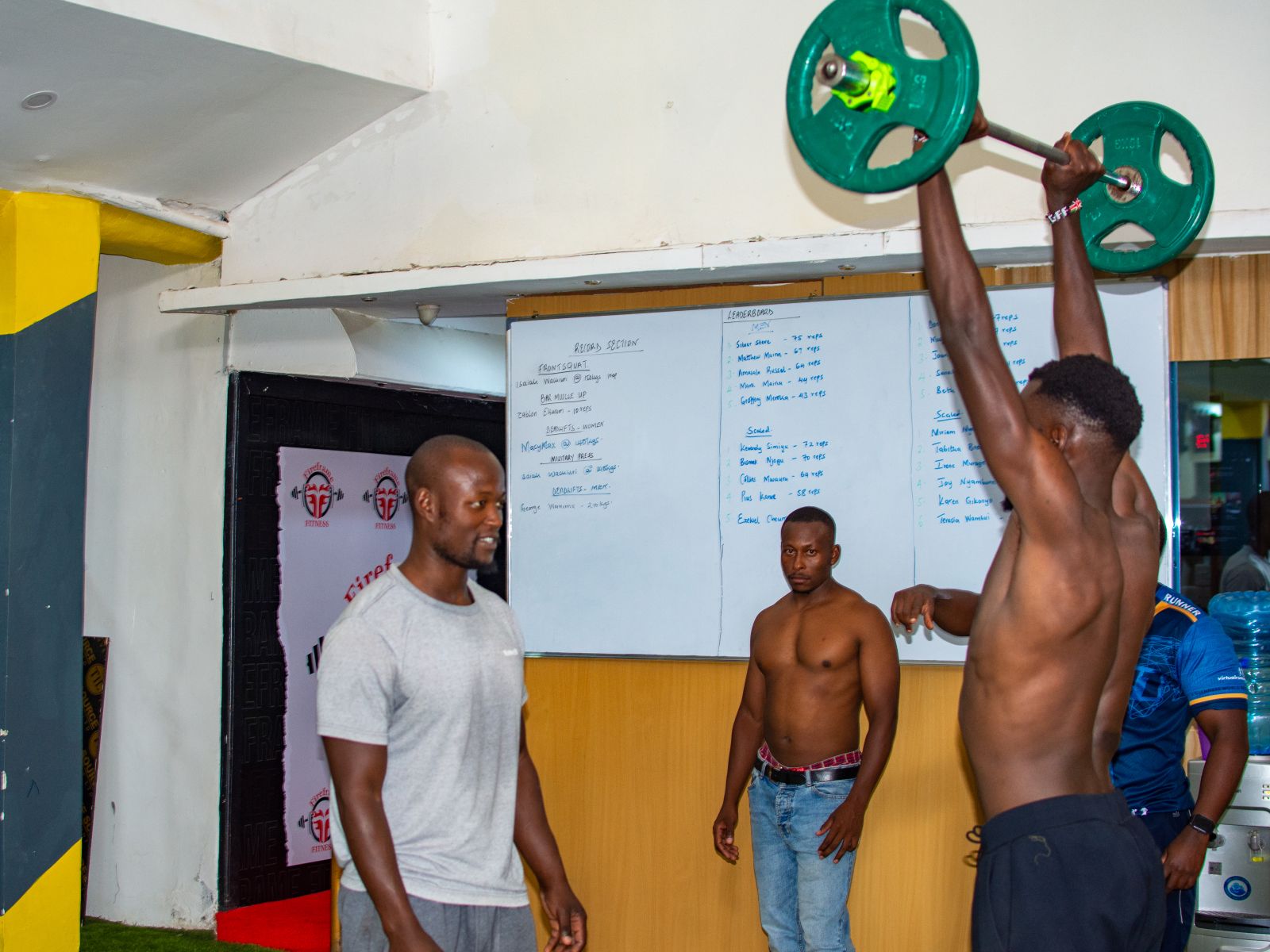
Why Every Athlete Needs a Fitness Routine?
Meshack Simiyu , Kenya Nov 30, 2025
Why Every Athlete Needs a Fitness Routine
Athletes are often celebrated for their talent, speed, and skill. But behind every winning moment—whether it’s a powerful forehand in table tennis or a knockout punch in the boxing ring—there is something deeper holding everything together: a consistent fitness routine.
At Global Fast Fit (GFF), we have seen how structured fitness changes the game for athletes at every level. It’s not just about training harder; it’s about training smarter. Here’s why every serious athlete needs a fitness routine that goes beyond their sport-specific drills.
1. Fitness Builds the Foundation for Performance
A disciplined fitness routine gives athletes the physical capacity to perform at their peak. Strength, agility, stamina, balance, and flexibility all come from deliberate fitness work.
Sport skills are important, but fitness creates the engine that powers them.
2. It Reduces Injuries and Extends Athletic Life
Many injuries in sports come from weak muscles, poor mobility, or overworked joints.
A balanced fitness routine—like the GFF model that combines conditioning, mobility, and core workouts—ensures the body is well prepared and protected. This means fewer injuries and more years competing.
3. Faster Recovery, Better Consistency
Athletes who follow proper routines recover faster from training and tournaments.
Good fitness programs include warm-ups, cooldowns, stretching, and strength phases that help the body repair and rebuild. This consistency is what separates champions from the rest.
4. Mental Strength Comes From Physical Discipline
Fitness is not only about the muscles. It trains the mind.
A routine teaches commitment, resilience, focus, and discipline—qualities every athlete needs. When you know your body is strong, your confidence naturally grows.
5. Fitness Helps Athletes Adapt to Different Challenges
From long tournaments to sudden schedule changes, travel, and tough opponents—fitness prepares you for the unexpected. A well-trained body responds better to stress, fatigue, and pressure.
This is why GFF emphasizes functional fitness that supports all sports, including table tennis, rugby, swimming, boxing, and more.
6. Fitness Unlocks a Higher Level of Skill
A fit athlete moves faster, reacts quicker, and thinks clearer.
Whether it’s footwork in table tennis, speed in rugby, or coordination in swimming, fitness amplifies every skill an athlete already has.
Conclusion: Fitness Is Not Optional — It’s the Secret Weapon
Every athlete—beginner or elite—can reach a higher level with a structured fitness routine. At Global Fast Fit, we continue to prove that a strong body builds a stronger athlete.
Fitness is the bridge between potential and performance.
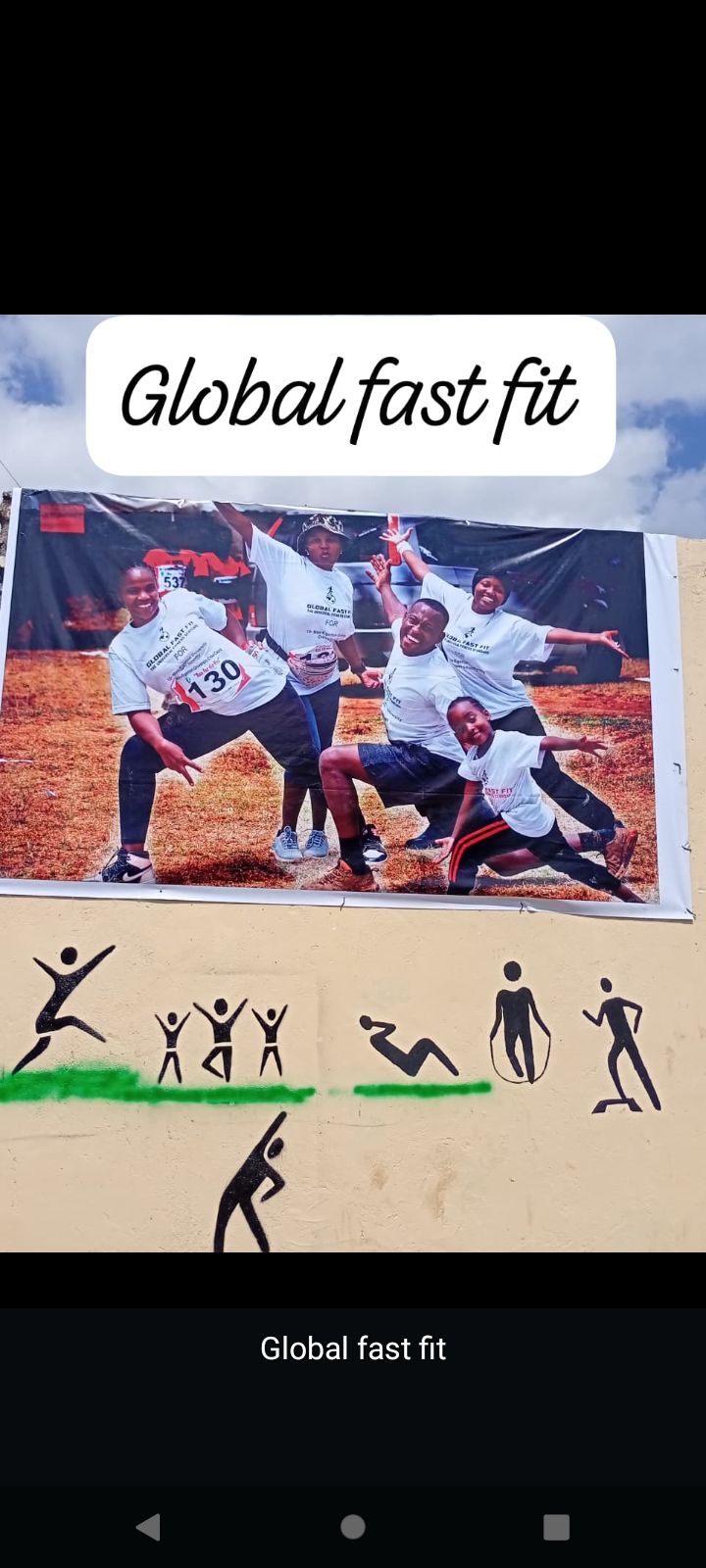
I HAVE NEVER MADE IT ON A BILLBOARD.....BUT THIS ONE COMES PRETTY CLOSE
Kelvin Njihia Kairu , Kenya Nov 29, 2025
When I first imagined seeing myself on a billboard, It felt like something only reserved for celebrities, influencers or people with far more confidence in front of a camera than myself. While I have not made it to an actual billboard, something exciting happened recently that feels just as surreal: I appeared on a poster and canvas display for our fitness company, Global Fast Fit.
Being part of the Global Fast Fit campaign reminds me of how far I have come, not just physically but also mentally. I used to think that those kinds of moments are for other people but I now realize they are for anyone willing to step into the purpose and say yes to opportunities , even the unexpected ones. It only takes one picture, you never know which it is.
So no, I have not appeared on a giant billboard yet but seeing myself on that poster felt like a reminder that big things often start wiyh smaller, meaningful milestones. and if this is just the beginning, I can't wait to see what's next
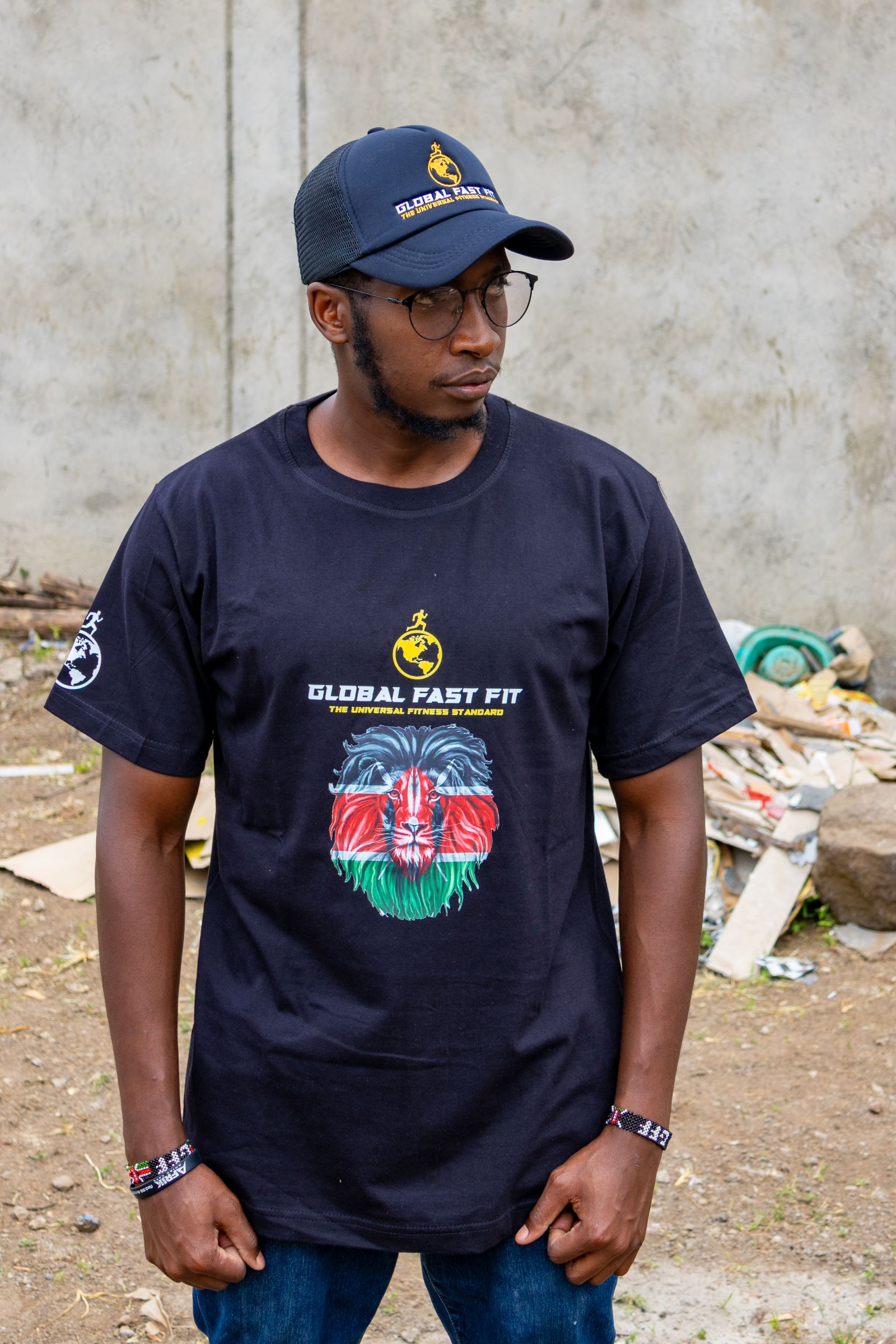
Advancing My Career with Global Fast Fit
Simon Njuguna Muchiri , Kenya Nov 28, 2025
When I graduated from campus four years ago, I walked out of the gates with a fresh degree in Procurement and Logistics Management and a heart full of ambition. Like many graduates, I imagined jumping straight into a career that matched my specialization. Life, however, had different plans.
I eventually found myself working with Global Fast Fit-a space centred around health, fitness, community, and impact. It was a world far from what I had pictured for myself academically. Over time, I settled into the rhythm of the work, slowly convincing myself that my degree would become just another framed document on the wall. Interesting, but irrelevant.
I was wrong.
Earlier this year, everything shifted. I was asked to take charge of logistics operations for GFF Kenya. The moment the announcement was made, something clicked. Suddenly, concepts I had studied years ago began resurfacing-procurement strategies, supplier management, cost analysis, quality checks, risk handling. It was as if my academic life had been quietly waiting for its cue.
And it didn’t stop there.
I was soon placed at the helm of one of the most exciting projects I’ve ever handled: the renovation and rebuilding of the GFF Wellness Centre in Lanet. This wasn’t just another building-this would become the national nerve centre for all GFF activities in Kenya.
From the very first day on-site, I felt the weight and thrill of responsibility. I inspected materials, negotiated with suppliers, coordinated labour teams, and ensured every step aligned with timelines and budgets. Beyond the technical work, there was the human side-mobilizing nomads, keeping the energy high, and taking ownership of the project.
Every task reminded me that skills don’t disappear; they simply wait for the right opportunity to shine. The long days in class, the endless notes, the group assignments-they were not wasted after all. They were preparing me for this moment.
Standing on that construction site, hearing the buzz of tools and seeing progress take shape brick by brick, I realized something profound: sometimes your path bends, pauses, or even detours, but it still leads you exactly where your strengths can thrive.
Working with Global Fast Fit hasn’t just advanced my career-it has reshaped my purpose. It has taught me that growth isn’t always loud or instant. Sometimes it happens quietly, in the background, until one day you’re finally given the space to rise.
And when that moment comes, everything you’ve learned-every skill, every lesson-finally makes sense.

FROM WORKOUTS TO WORK BOOTS
Kelvin Njihia Kairu , Kenya Nov 24, 2025
At Global Fast Fit, we are used to lifting weights, counting reps and talking about muscles groups. Lately, things have taken a twist. Instead of building bodies, we have been building the actual Global Fast Fit wellness Center in Lanet. It is sill under construction, still messy , still noisy-but honestly, that's part of the journey
Starting With The Basics
One of the person who has been guiding us is Dr James' father. He is a retired civil engineer and the kind of person who can look at a wall and immediately see where things should and shouldn't go. The first thing he taught us wasn't how to use a tool-it is how to think.
Plan first. Don't rush. Know why you are doing something before you do it. Simple things, but they really change how you approach work.
Safety First Even When It Looks Easy
Before touching anything first, we went over safety. Things like wearing shoes, checking where to place your fingers when using the grinding machine( of course, losing fingers ain't cool) and never assuming the next person knows what you are about to do. These small habits matter.
Demolition Is Not Just Breaking Stuff
I thought demolition meant smashing things. It's really not. It's controlled , slow and kind of strategic(That's where the engineer came in). There is a way to take things down so you don't create bigger problems later. I learnt how to remove sections without damaging the rest of the structure. It's extremely satisfying when you get it right
Learning The Grinder
The grinding machine was scary at first. It vibrates, it makes noise and it can slice anything. But with guidance, I learned to go slowly, keep steady and check progress as I cut. Once you get it, it's actually smooth
Mixing Sand, Cement and Water
Most of hat I have learnt has been from Sammy, the lead foreman. We spend most time with him, and honestly, he has the patience of ten people combined.
He is the one who has taught us how to mix sand, cement and water properly. Initially, I thought you just mix until it looks right but that is not the case. Turns out there is a method. Too watery and it's useless, too thick and it doesn't bond.(Where did he learn his masonry? Prison. Long before I was even born. Story of another day)
Tiling And Grouting
Tiling was another lesson. Keeping the lines straight, checking the level, spacing the tiles- it's detailed work. Sammy does not get tired of answering questions even if you ask twice or thrice. After tiling, there was grouting, which takes more patience than I expected but once done and you step back, the results feel worth it.
Cleaning Up And Calling It A Day.
A big part of construction is cleaning. Sweeping, cleaning and organizing the tools. It is not the glamorous part, but it makes the next day easier. Each day I leave a little bit dusty, a bit tired, but always having learned something practical.
What I am Taking From All This
The center is not yet completed yet, but I have picked up skills I did not expect to learn. Planning, precision, tool using, asking questions and being open to learning by doing. I did not go into this thinking that I would enjoy construction, but I actually do. Maybe because the people who are teaching us genuinely know their stuff and don't mind sharing it.
A Different Kind Of Fitness
At Global Fast Fit, we are usually building bodies This time, we are building the space that will help people build those bodies. It has been a different kind of workout-one involving dust, tools and a lot of guidance- but honestly, I am glad I have been part of it. Let's wait and see how the center unfolds. Honestly, I think it will be a great space

How Global Fast Fit Continues to Support and Grow Talent in Kenya 🇰🇪
Meshack Simiyu , Kenya Nov 23, 2025
How Global Fast Fit (GFF) Continues to Support and Grow Talent in Kenya
In every community, talent is like a seed — it needs the right soil, the right support, and the right environment to grow. Global Fast Fit (GFF) has become that environment for many young athletes across Kenya. Through mentorship, exposure, and structured programs, GFF is steadily shaping the next generation of sports and fitness champions.
A Platform Built for Growth
GFF goes beyond fitness routines. It has created a system that identifies raw talent, nurtures it, and provides meaningful opportunities for athletes to shine. Whether it’s in boxing, rugby, table tennis, or fitness leadership, GFF ensures that emerging athletes feel seen, supported, and empowered.
The initiative works closely with clubs, institutions, gyms, and communities — ensuring that talent at the grassroots level is not overlooked. From sponsoring athletes to providing training avenues and creating competitive opportunities, GFF proves that talent grows best with intentional support.
My Journey as a Table Tennis Player Supported by GFF
As a passionate table tennis player and coach, my journey has been shaped in a big way by GFF. Their support has opened doors that I never imagined. Through GFF, I have gained:
Exposure through travel, coaching sessions, and tournaments
Mentorship from fellow athletes and GFF trainers
Resources that have strengthened my training and community outreach
A platform to inspire young athletes through table tennis clinics and events
With GFF behind me, I am not only growing as an athlete but also using my skills to help the organization bring sports, fitness, and motivation to schools, institutions, and local communities.
Opportunities That Make Athletes Believe Again
GFF’s support does not end with individual athletes. The program creates a ripple effect — when an athlete grows, they uplift others. By offering:
Fitness camps
Sponsored sport events
Mentorship programs
Content creation support
Cross-county and cross-border exposure
GFF ensures that every young athlete has a chance to discover their potential and pursue excellence.
Building a Culture of Talent and Wellness
What makes GFF special is its blend of fitness, community, and opportunity. It’s not just about winning medals — it’s about building confident, skilled, and empowered individuals who inspire others.
From the local gyms of Nakuru to national tournaments and even international collaborations, GFF keeps proving that talent multiplies when it is nurtured.

BREAKING NEWS! Global Fast Fit and Nyandarua County Ministry of Youth and Sports Affairs Collaborate on Future of County Athletics
S. Sean Suvanadesa , Thailand Nov 17, 2025
 Login with Google
Login with Google
 Signin with Apple
Signin with Apple